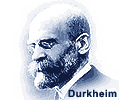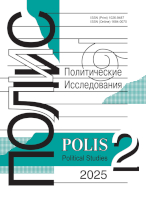Russian-Polish Borderland:
Problems and Prospects for the Development of Cross-Border Relations
Palmowski T.,
Professor, University of Gdansk, geotpl@ug.edu.pl
Fedorov G.M.,
Professor, Immanuel Kant Baltic Federal University, gfedorov@kantiana.ru
elibrary_id: 72128 |
DOI: 10.17976/jpps/2020.02.13
Palmowski T., Fedorov G.M. Russian-Polish Borderland: Problems and Prospects for the Development of Cross-Border Relations. – Polis. Political Studies. 2020. No. 2. https://doi.org/10.17976/jpps/2020.02.13
This article was prepared with the financial support of the Russian Science Foundation (project No. 18-17-00112 “Ensuring the Economic Security of the Russian Western Frontier Regions in the Conditions of Geopolitical Turbulence”).
The Kaliningrad region is the only Russian territory bordering Poland. Polish-Russian relations play an important role in the economic and social relations of Russia and the European Union in the Baltic, where the transnational Baltic region is being actively formed. In the 1990s and early 2000s, crossborder Russian-Polish ties were established across different fields. However the intensity of these ties has begun weakening, and after the 2014 Ukrainian crisis and imposition of sanctions on Russia, recession reached all aspects of Russian-Polish relations. It was not until 2017 that the trade external turnover between Poland and Russia, and Poland-Russia cross-border cooperation program projects, saw positive changes. Mutual tourist flow between the Kaliningrad region and its neighboring regions of Poland has started to enhance. This period is still relatively poorly covered in scientific literature, but the cross-border interactions taking place are actively studied by scholars. Kaliningrad and Gdansk host international conferences on international cooperation in the Baltic, which have become a tradition. Several academic journals specialize in the problems of the Baltics: the Baltic Region journal published by Immanuel Kant Baltic Federal University, and Regiony nadmorskie journal published by the University of Gdansk. Despite the fact that cross-border ties have weakened, they continue to play a role in the development of the neighboring border regions of Russia and Poland. In this article, publications, statistical data, and the authors’ research experience are analyzed to evaluate current cross-border interactions between the Kaliningrad region of Russia and the neighboring regions of Poland. The authors portray prospective directions that devlopment of these mutually beneficial interactions could take, which could be much more highly developed if political relations between the two countries improve.
References
Adapting to European Integration? 2008. Ed. by S. Ganzle, G. Muntel, E. Vinokurov. Manchester: Manchester University Press.
Bolychev O.N., Gumenyuk I.S., Kuznetsova T.Y. 2015. The Role of Local Frontier Movement in the Development of Retail Trade in Kaliningrad Region of the Russian Federation and the Border Regions of the Republic of Poland. – Baltic Region. No. 4 (26). P. 102-112. https://doi.org/10.5922/2079-8555-2015-4-8
Druzhinin A.G., Gorochnya V.V., Gontar N.V., Dets I.A., Lachininskiy S.S., Mikhailov A.S. 2017.
Transboundary Clusters in the Coastal Zones of the European Part of Russia: Inventory, Typology, Factors, and Prospects. – Baltic Region. Vol. 9. No. 4. P. 21-32. https://doi.org/10.5922/2079-8555-2017-4-2
Duckert R. 1995. Der Ostseeraum – ein Raum voller Initiative. – Mare Balticum. Lubek: Ostsee-Akademie Travemunde.
Dudzińska K., Dyner A.M. 2013. Small Border Traffic with Kaliningrad: Challenges, Opportunities, Threats. PISM Policy Paper. No. 29 (77). URL: https://pism.pl/publikacje/PISM_Policy_Paper_nr_29__77___Ma_y_ruch_graniczny_mi_dzy_obwodem_kaliningradzkim_a_Polsk____wyzwania__szanse_i_zagro_enia (accessed 30.01.2020).
Gumenyuk I.S., Studzieniecki T. 2018. Current and Prospective Transport Connections Between Poland’s Border Voivodeships and Russia’s Kaliningrad Region. – Baltiс Region. Vol. 10. No. 2. Р. 114-132. https://doi.org/10.5922/2079-8555-2018-2-8
Kivikari U. 2001. A Growth Triangle as an Application of the Northern Dimension Policy in the Baltic Sea Region. Russian-Europe Centre for Economic Policy. Policy Paper. URL: http://citeseerx.ist.psu.edu/viewdoc/download?doi=10.1.1.629.6278&rep=rep1&type=pdf (accessed 30.01.2020).
Kivikari U., Lindstrom M., Liuhto K. 1998. The External Economics Relations of the Kaliningrad Region. Turku School of Economics and Business Administration, Discussion C2.
Makarychev F., Sergunin A. 2017. Russia’s Role in Regional Cooperation and the EU Strategy for the Baltic Sea Region (EUSBSR). – Journal of Baltic Studies. Vol. 48. No. 4. P. 465-479. https://doi.org/10.1080/01629778.2017.1305186
Mikhailov A.S. 2014. Geography of International Clusters in the Baltic Region. – Baltic Region. No. 1. P. 113-123. https://doi.org/10.5922/2079-8555-2014-1-10
Oman C. 1996. The Policy Challenges of Globalisation and Regionalisation. OECD Development Centre Policy. Brief. No. 11. https://doi.org/10.1787/151004514681
Palmowski T. 2010. Problems of Cross-Border Cooperation Between Poland and the Kaliningrad Oblast of the Russian Federation. – Quaestiones Geographicae. Vol. 29 No. 4. P. 75-82. https://doi.org/10.2478/v10117-010-0033-2
Perkmann M. 2003. Cross-Border Regions in Europe: Significance and Drivers of Regional Cross-Border Co-operation. – European Urban and Regional Studies. Vol. 10. No. 2. P. 153-171. https://doi.org/10.1177/0969776403010002004
Pogranicze polsko-rosyjskie. Problemy wspołpracy transgranicznej z Obwodem Kaliningradzkim. 2007. Ed. by T. Palmowski. Gdynia–Pelplin: Bernardinum.
Scott J.W. 1999. European and North American Contexts for Cross-Border Regionalism. – Regional Studies. Vol. 33. No. 7. P. 605-617. https://doi.org/10.1080/00343409950078657
Studzieniecki T., Palmowski T., Korneevets V. 2016. The System of Cross-Border Tourism in the Polish-Russian Borderland. – Procedia Economics and Finance. Vol. 39. P. 545-552. https://doi.org/10.1016/s2212-5671(16)30298-2
The Future of the Baltic Region. 1994. Uppsala: Uppsala University.
Vision and Strategies Around the Baltic Sea 2010. 1994. Copenhagen.
Zanker A. 1995. Zukunft liegt im Osten. Wien: Wirtschaftsverlag Uberreuter.
Anisevich R., Palmovsky T. 2014. Polish-Russian Local Border Movement: the Experience of Two Years of Operation. – Science and Tourism: Interaction Strategies. No. 1. P. 26-31. (In Russ.)
Baltiiskii region – region sotrudnichestva – 2019: materialy III Mezhdunarodnoi nauchno-prakticheskoi konferentsii. Chast’ I [Baltic Region – Region of Cooperation – 2019: Materials of the III International Scientific and Practical Conference. Part 1]. 2019. Kaliningrad: BFU Press. (In Russ.)
Fedorov G.M., Zverev Yu.M., Korneevets V.S. 1996. Baltiiskie sravneniya i prognozy [Baltic Comparisons and Forecasts]. Kaliningrad: Kaliningrad University Press. (In Russ.)
Fedorov G.M., Zverev Yu.M., Korneevets V.S. 2013. Rossiya na Baltike: 1990-2012 gody [Russia in the Baltic: 1990-2012]. Kaliningrad: BFU Press. (In Russ.)
Gumenyuk I.S., Studzhenitskii T. 2019. Aktual’noe sostoyanie evroregionov s uchastiem Kaliningradskoi oblasti [Current Status of Euroregions with the Participation of the Kaliningrad Region]. – Baltiiskii region – region sotrudnichestva – 2019. Chast’ I. [Baltic Region – Cooperation Region – 2019. Part I]. Kaliningrad: BFU Press. P. 88-98. (In Russ.)
Kivikari U. 1996. Ekonomicheskoe prostranstvo Baltiiskogo regiona [The Economic Space of the Baltic Region]. Helsinki: Otava. (In Russ.)
Kaliningradskaya oblast’ Rossii i rasshirenie Evropeiskogo soyuza. Problemy obshcheevropeiskoi integratsii [Kaliningrad Region of Russia and the Enlargement of the European Union. Problems of European Integration]. 2003. Ed. by A.P. Klemeshev, S.V. Kortunov. Kaliningrad: Kaliningrad University Press. (In Russ.)
Kortunov S.V. 2004. Kaliningrad: Gateway to Wider Europe. – Russia in Global Affairs. No. 6. P. 162-174. (In Russ.)
Mau V.A. 2002. Problemy Kaliningradskoi oblasti – Kaliningrad: evromost ili evrotupik? [Problems of the Kaliningrad Region – Kaliningrad: European Bridge or European Dead End?]. Moscow: Committee Russia in the United Europe. P. 22-27. (In Russ.)
Palmowski T. 2004. The New Baltic Bipolar Model of Interregional Cooperation. – IKBFU’s Vestnik. SER. Regional Studies. No. 6. P. 66-75. (In Russ.)
Problemy regional’nogo razvitiya v nachale XXI veka: materialy mezhdunarodnoi nauchnoi konferentsii [Problems of Regional Development at the Beginning of the XXI Century: Proceedings of an International Scientific Conference]. 2019. Kaliningrad: BFU Press. (In Russ.)
Timmermann H. 2004. Ot idei – k deistviyam. Budushchee evropeisko-rossiiskikh otnoshenii [From Ideas to Action. The Future of European-Russian Relations]. Bonn. (In Russ.)
Transgranichnoe klasteroobrazovanie v primorskikh zonakh Evropeiskoi chasti Rossii: faktory, modeli, ekonomicheskie i ekisticheskie effekty [Cross-Border Clustering in the Coastal Zones of the European Part of Russia: Factors, Models, Economic and Settler Effects]. 2017. Ed. by A.G. Druzhinin. Rostov-on-Don: YuFU Press. (In Russ.)
Vorozheina Ya.A. 2018. Vneshnyaya politika Respubliki Pol’sha po otnosheniyu k Kaliningradskoi oblasti Rossiiskoi Federatsii [The Foreign Policy of the Republic of Poland Towards the Kaliningrad Region of the Russian Federation]. Avtoreferat diss. … kand. polit. Nauk [Abstract of Diss. for the Degree of Cand. of Pol. Sci.]. Moscow. (In Russ.)
See also:
Sebentzov A.B., Lomakina A. I.,
Theory and practice of cross-border regionalization. Lessons for Russia. – Polis. Political Studies. 2025. No2
Babko N.A.,
The bluest sea in the world: reading Steve Dobransky. – Polis. Political Studies. 2013. No1
Kosov Yu.V.,
Trans-Border Regional Cooperation: the North-West of Russia. – Polis. Political Studies. 2003. No5
Shinkovsky M.Yu.,
Trans-border Cooperation as a Lever to Be Applied for the Development of Russian Far East. – Polis. Political Studies. 2004. No5
Shaklein V.V.,
Does Washington Have Any Real Strategy Towards Russia? (Thoughts on the Monograph “Russia and the United States in the Evolving World Order”). – Polis. Political Studies. 2019. No2





.jpg)






 print
print
.jpg)
.jpg)